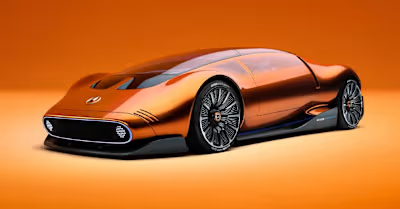Why Axial Flux Motors Can Change The EV Landscape
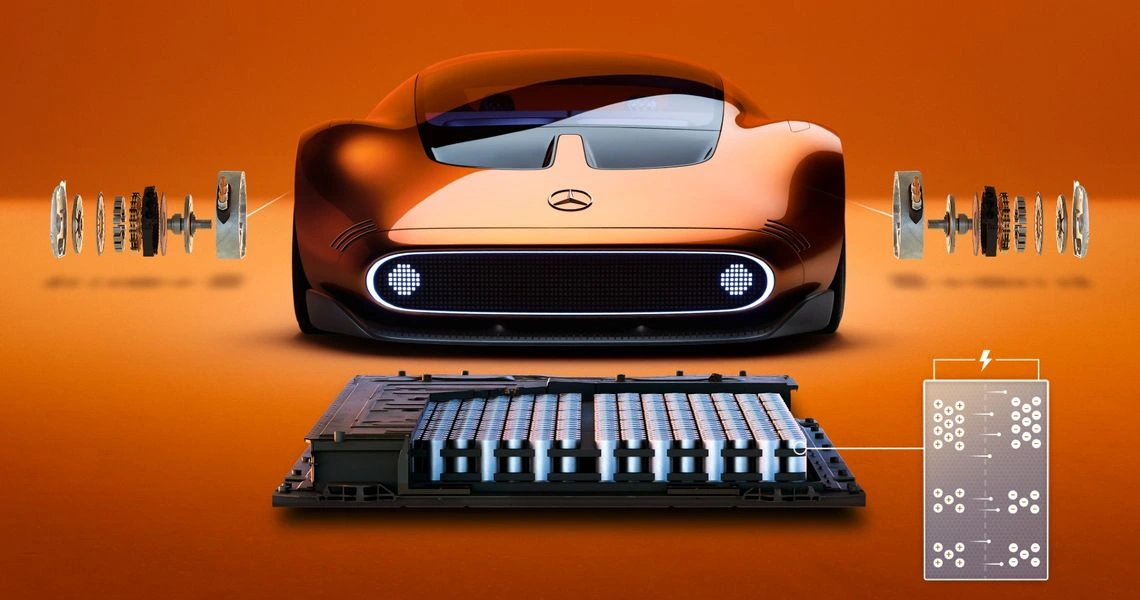
Mercedes-Benz
There’s a new breakthrough in electric vehicle technology that’s about to shake things up. Axial flux motors are here to tackle some problems typically associated with EV motors, such as weight and environmental concerns, while also boosting range. YASA is the company currently at the forefront of this new technology. The Mercedes-Benz owned company recently made big waves by showcasing their axial flux motors in the incredible new Vision One-Eleven concept car. But don’t worry— although this technology has been used exclusively in hypercars so far, there’s a good chance you’ll see a lot more of these motors on the road in the coming years.
The electric vehicle industry currently relies almost exclusively on radial flux motors. While this technology has certainly given us some wicked powerful EVs, axial flux motors are better in almost every way. Not only are they lighter and smaller, but they also provide more torque and greater power density. These breakthrough motors pack a lot more punch in a smaller and lighter package. The axial flux motor is a game-changer that opens up a whole new world of possibilities for vehicle designers.
The Incredible Benefits Of Axial Flux Motors
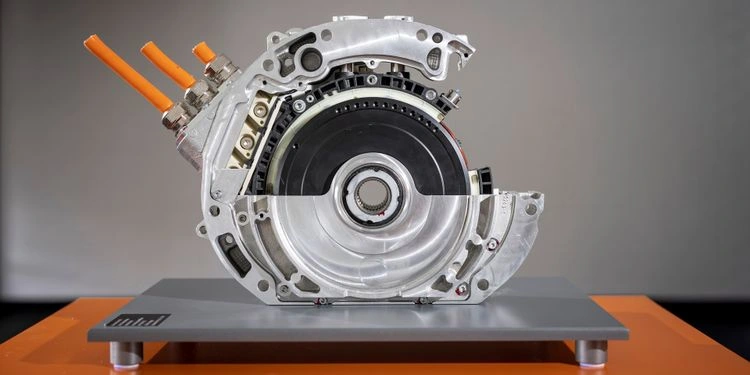
Mercedes-Benz
When it comes to motor design, a traditional radial flux motor contains a rather heavy support component known as a stator yoke. One of the biggest innovations of axial flux motors is that they remove the need for a yoke, which reduces the stator iron mass by 80 percent. As a result, axial flux motors have two to three times the power density of radial flux motors. A YASA motor can provide up to 480 hp, all while being a fraction of the weight. We’ll get to the other incredible benefits of this reduced mass later.
Electric vehicles are already known for their massive torque figures, but axial flux motors are about to kick things up a notch. It all comes down to the greater radius of an axial machine. Since torque is force multiplied by the radius, an axial flux motor automatically has greater torque figures than a radial flux motor. YASA motors go a step further with much shorter and more optimized copper windings. All of these factors mean that YASA axial flux motors have four times the torque density of other EV motors out there.
Not only does an axial flux motor have greater torque density, it does so while taking up 50 percent less volume than its radial counterpart. The compact size of YASA motors opens up a whole new world of possibilities for car designers. We’ve already seen this put into practice with the Mercedes-Benz Vision One-Eleven and its spacious lounge-like interior.
One of the drawbacks of radial flux motors is a reduction of power under intense conditions as the windings heat up. Think of it this way: if radial flux motors are like standard brakes, then axial flux motors are like vented discs, able to handle more demanding conditions. This is because of much shorter windings and direct oil cooling. YASA axial flux motors have an impressive thermal efficiency advantage thanks to their design.
Axial flux motors achieve these amazing benefits, all while being less mechanically complex. YASA motors require less copper, iron, and permanent magnet materials compared to traditional radial flux motors. This means a lower material cost and a more environmentally sustainable product overall.
Axial Technology Brings Greater Range To Electric Vehicles
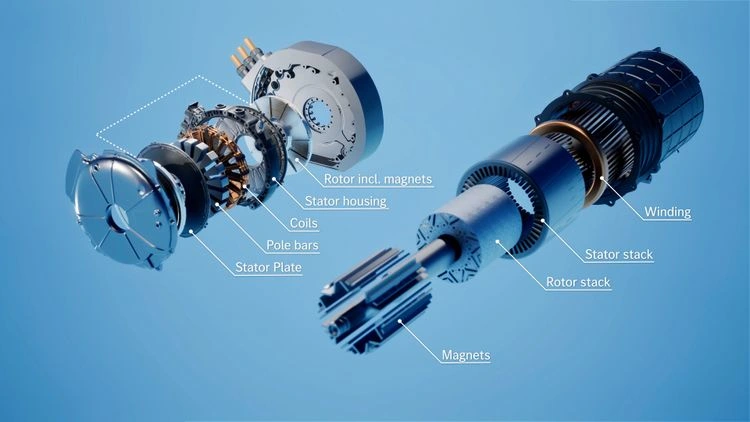
Mercedes-Benz
While axial flux motors are just as electrically efficient as radial flux motors, their reduced size and weight means greater range efficiency overall. Heavy batteries, motors, and related components have been holding back EVs for a long time. Lightweight EVs are more efficient, and that translates into greater range.
YASA axial flux motors can have a domino effect on the range of an EV. Since the motor is so compact and light, less structure is needed to mount it, which saves even more weight. With a small motor, you can also get away with a smaller battery to achieve the same range, reducing the weight even further. A lighter battery means its supporting structure can also be reduced. Other subsystems can also benefit from the weight reduction, such as brakes and cooling. Overall, YASA motors can achieve an impressive 5-10% increase in efficiency and range.
A Slow Start For This Cutting-Edge Technology
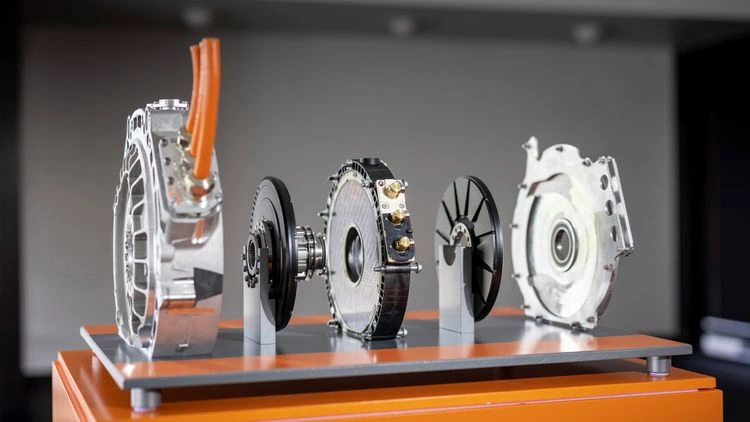
Mercedes-Benz
Axial flux technology has actually been around for a long time, but there have been several reasons why they’ve struggled to catch on until now. Michael Faraday developed a primitive disc motor back in 1821, which already had the properties of an axial flux motor. He also experimented with what would become radial flux motors.
Over the following years, both technologies were tested further, and both had their own unique advantages. However, there was a major hurdle that kept axial flux technology from reaching commercial viability. Despite the advantages, the manufacturing complexity of axial flux motors made them difficult to bring to market.
Axial flux technology also had other challenges to overcome. The design had a complex winding as well as poor cooling capability, which was important for thermal efficiency. A breakthrough was finally developed by YASA, allowing the motor to be manufactured with Soft Magnetic Composite, or SMC. By leveraging the advantages of SMC, the axial flux design overcame significant obstacles. It simplified the winding, removed the complexity, reduced manufacturing costs, and improved cooling. With these advancements, the potential of axial flux motors has skyrocketed. They’re now ready to power the next generation of EVs with their improved performance, cost-effectiveness, and enhanced cooling capabilities.
YASA Motors Are Already Breaking Records
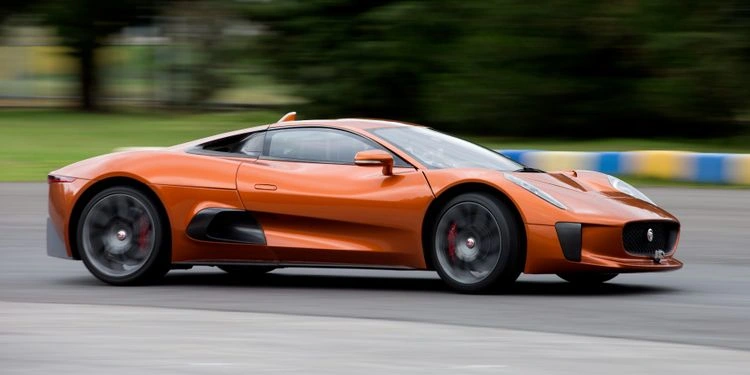
Jaguar
YASA axial flux motors have already had some truly heart-racing applications. 007 himself tested out the technology in the epic Jaguar C-X75 concept featured in the 2015 James Bond movie “Spectre.” This hybrid-electric concept car was powered by 4 YASA motors, taking the cutting-edge of technology in true Bond fashion.
YASA motors made their way into production road cars with the high-performance Koenigsegg Regera. The company is now partnering with top-tier sportscar manufacturers, providing them with powertrain solutions centered around their axial flux electric motors. Ferrari became YASA’s first OEM customer in large-scale production with the hybrid Stradale SF90.
The company is also breaking world records. In 2013, YASA supplied the power for a converted Lola LeMans Prototype. It set the electric land speed record, all while weighing under 1000 kg. Fast forward to 2015 and 2016, YASA-powered cars made their mark at the renowned Pikes Peak Hillclimb. Not only did they secure an overall victory, but they also became the first electric car to complete the challenging course in under 9 minutes. The company didn’t stop there. They also ventured into new frontiers, breaking speed records both on the water in 2018 and in the air in 2021, redefining what’s possible in the world of electric propulsion.
YASA’s journey took an exciting turn in 2021 when they became a fully owned subsidiary of Mercedes-Benz. Mercedes intends to prioritize integrating YASA’s motors into their AMG cars for enhanced performance and efficiency in both fully electric and hybrid vehicles. However, YASA also plans to continue supplying other OEMs with their motors for the time being. The move by Mercedes-Benz indicates the growing recognition of the potential of axial flux motors in the industry. As YASA’s technology proves its worth, it’s likely that other manufacturers will be enticed to explore the benefits of axial flux motors.
Like this project
Posted Aug 4, 2023
These breakthrough electric motors pack a lot more punch in a smaller and lighter package
Likes
0
Views
62
Featured on





